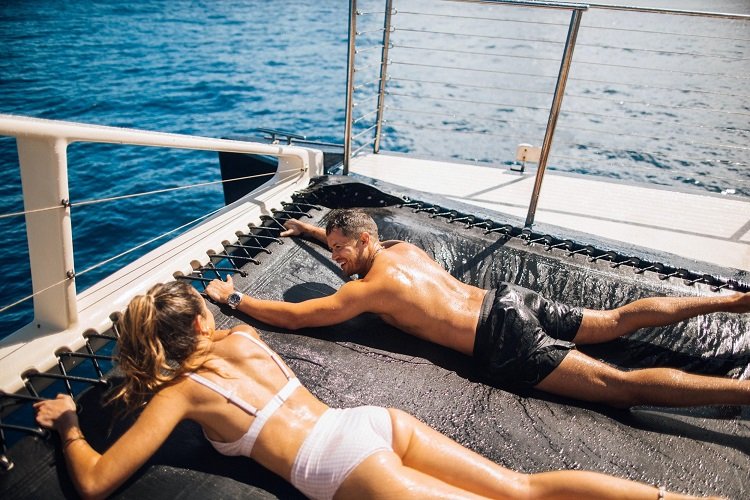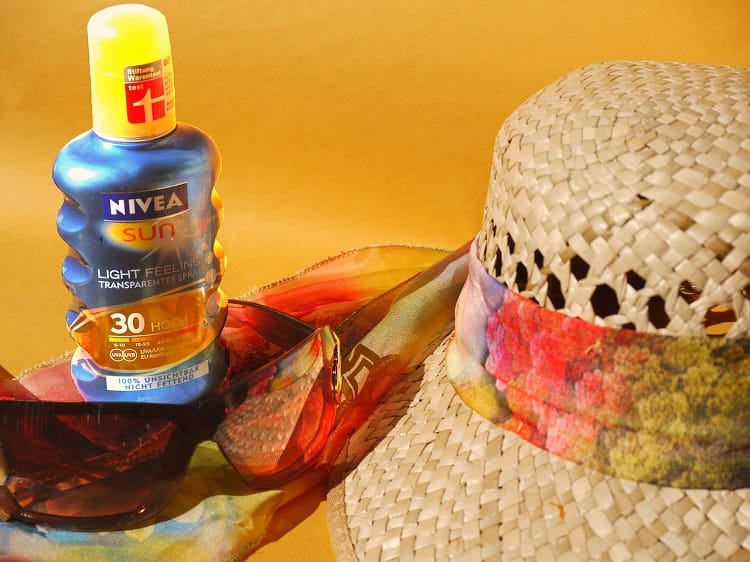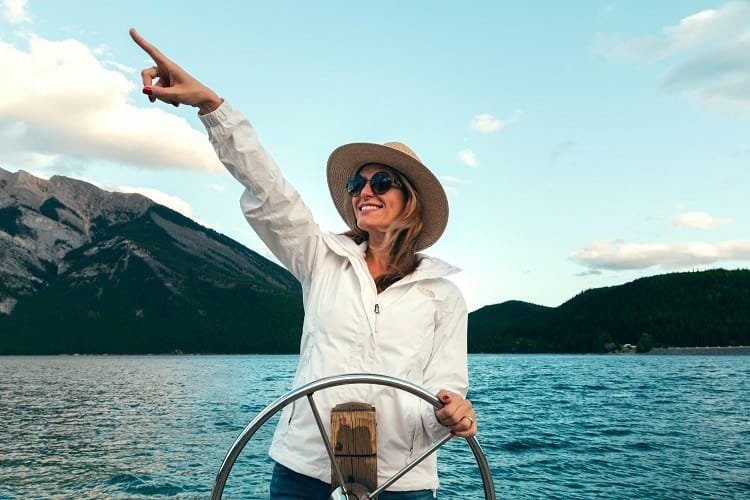Ah, the sun. That golden orb that keeps our planet warm and makes it possible for every living thing—plant and animal alike—to survive. According to Greek mythology, Zeus’ son, Apollo, rode a fiery chariot across the sky every day to bring light to the planet.
Whether or not you believe there’s a deity riding around in a golden chariot pulled by fiery horses, you’ve got to admit that there’s something special about those first rays of sunshine warming your skin after a winter spell or long periods of indoor activity (Alexa, play “Here Comes The Sun” by The Beatles).
While soaking up some sun helps your body to make vitamin D in much larger quantities than you could consume from food, it is important to take precautions against overexposure and adopt sun safety practices to protect your skin.

Solar Energy And Why Sun Safety Is Important
Every day that the sun rises, it sends solar energy towards the earth. This includes infrared radiation, visible light, and ultraviolet (UV) radiation (more on this later). You can feel infrared radiation as heat. And, obviously, you can see visible light. You can’t see or feel UV radiation but it has more energy than the other two and it’s this energy that can harm you.
“How can that happen?” you may wonder. Well, I’m glad you asked.
See, the older we get, the thinner and more fragile our skin gets; this a natural effect of aging. This means that the skin is less able to self-repair when damage occurs. Years of cumulative exposure to the high energy that comes from UV radiation can lead to sunburn, skin damage, eye damage, and even skin cancer.
That’s why it’s important to protect your skin and consider sun safety every time you go outdoors.

UVA, UVB: Demystifying UV Radiation
We’ve already established that UV radiation is the part of sunlight that is harmful to us. Let’s break it down further and learn what happens so that we know how to better protect our skin.
UV radiation is the result of a nuclear reaction that occurs at the sun’s core. There are basically two types of UV rays that do not get absorbed by the Earth’s atmosphere and make it to the surface through the sun’s rays: UVA and UVB radiation.
UVA rays make up 95% of the UV radiation that reaches Earth. These rays can penetrate glass and clouds and cause indirect damage to DNA. UVA rays affect cells deeper in the skin and damage collagen and elastin as well as generating free radicals. They are associated with skin aging, including wrinkles.
UVB rays make up 5% of the UV radiation that reaches the ground. These rays are more likely to be filtered by clouds and do not penetrate glass. They damage the outermost layers of the skin and can lead to premature aging. UVB rays can also cause DNA mutations that eventually lead to different types of skin cancer, including melanoma. You can also get cataracts from UVB rays.
Did you know? Australia has one of the highest rates of skin cancer in the world. Melanoma is the most common cancer affecting 15- to 39-year-olds.

Living A Sun-Safe Life
It’s not all gloom and doom; you can still enjoy the sun without compromising your health. What you need is a good sun protection strategy—a plan for protecting your skin and reducing the risk of sun overexposure when you’re outdoors.
A good sun protection strategy includes understanding what your sunscreen can and can’t do as well as choosing the right clothing.
Sunscreen and SPF
SPF is short for Sun Protection Factor and is the standard used in sunscreens to measure the level of protection against sunburn caused by UVB rays.
In theory, this is how sunscreen works—let’s say it takes 10 minutes for your skin to burn without any kind of sun protection. Applying sunscreen with an SPF of 15 should keep you protected from sunburn for 150 minutes while an SPF of 30 would double that at 300 minutes or 5 hours.
However, the US Food & Drug Administration reasons that this theory is flawed as it doesn’t account for skin type, the amount of sunscreen applied, and the intensity and distribution of UVB rays depending on the time of day and geographic location.
So it’s better to think of SPF in terms of the amount of solar exposure, and not time spent in the sun. Think of it in terms of percentages: SPF 15 keeps out approximately 93% of UVB rays; SPF 30 filters about 97% and SPF 50 about 98%.
To ensure that your sunscreen also offers protection against UVA rays, choose a product that offers “broad-spectrum” protection (this should be clearly indicated on the label).
As a guide, liberally apply your broad-spectrum sunscreen 30 minutes before going out and again just before you head outside. For everyday use, an SPF of 15 or higher will do. But if you spend lots of time outdoors, choose a water-resistant option with an SPF of 30 or higher. Reapply your sunscreen every two hours or after swimming or sweating.

Clothing and UPF
Clothes are more than just a way to cover up or make a fashion statement; they can absorb or block UV radiation and are an effective form of protection against sun damage. Ultraviolet Protection Factor (or UPF) is a gauge of how much UV radiation is absorbed by fabrics.
These days many labels on clothing, hats, and fabrics indicate their UPF rating. For example, a fabric labeled UPF 50 only allows 1/50th of UV radiation to pass through it, thus reducing exposure by 50 times. This means that in the areas where your skin is protected by the fabric, it will be 98% covered from harmful UVA and UVB radiation.
Clothing that has a UPF rating of 30 to 49 offers very good protection. However, aim to wear fabrics with UPF 50+ rates, especially when it comes to kids swimwear. Keep in mind that any clothing leaves some skin exposed and that’s why you need to pair it with a good sunscreen.
There are serious risk factors associated with spending too much time in the sun, including skin cancer. But if you understand how to protect your skin against the harmful UV rays by using a good broad-spectrum sunscreen and wearing sun-safe clothing, you can stay safe and happily enjoy being outdoors.
Author Bio: Anita White is the passionate owner of Sandy Feet Australia; the fashionable sun safe kids swimwear brand based on the Sunshine Coast. She loves exploring the outdoors with her husband and two kids and of course, in a sun safe manner!

